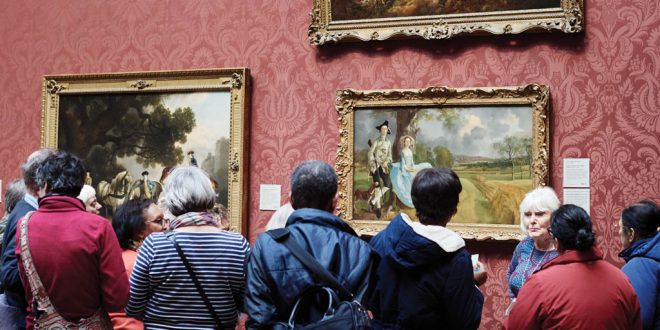
Photo via Gtislington.com
Art seems to be quite an illusory and subjective topic of discussion. Writing about art is actually also a type of art. However, according to WritingCheap research, the vast majority of students face difficulties with creating art essays, especially related to paintings.
But there’s nothing to be scared of. This exquisite task is easy to cope with when you know its peculiarities, structure, and the main rules. We are going to review the main features and secrets of writing a good art essay.
What is an art essay?
We are all familiar with the definition of the essay. It’s funny that initially, it meant an attempt to organize one’s thoughts in writing.
Perhaps, that’s why psychologists often recommend putting down all your thoughts on paper. The structure and purpose of an essay can differ tremendously, and there are various types of its logical organizations — you can find at least fourteen on Wikipedia.
Basically, an art essay is a piece of writing where the subject focuses on an art object or a display. Thus, you have to describe what you have seen or listened to and justify your analysis in the piece.
Make sure you don’t just describe the painting of a sculpture, but also give your own evaluation and reflexions. That’s one of the things that many university professors expect from their students.
The structure of an art essay
This type of writing does not differ much in its composition from other essays. It also has an introduction, the main body, and a conclusion.
The rules are practically the same: make sure that your intro has a thesis sentence, the main text offers at least three ideas, and the last paragraph sums everything up and supports your thesis statement again.
You should not forget about citing the useful sources that you have been given or those that you have found yourself. Moreover, you must express your personal opinion.
What to start with?
Just like any other academic piece of writing, the work on an art essay starts with research. Usually, choosing a topic and researching takes up to 55-60 percent of the total time required to create it.
Try to find as much information as possible about the painting. First of all, you have to get to know the author of the creation and its official title. Perhaps, the painter belonged to some particular school or style. If a painting has multiple names, you have to find a reason for this. Dive into the history of the masterpiece.
When was it painted? Who was the audience? Where is the painting now? It may have some connection to historical events or even display them. Make sure you check if the current version of the work differs from the original.
Many artists tend to add some new features or even re-do their works from scratch, hiding the initial drawing. Try to figure out the subject of the piece of art. Who are the main heroes or the objects depicted on the canvas?
In addition to this, you have to check out the previous analyses of the drawing. However, we would highly recommend you not to read the reviews before you form your own ideas and assumptions. You don’t want to copy or re-write other people’s thoughts.
As we now are familiar with the general information about the picture, it’s time to take a closer look at some artistic details. Clarify the dominating colors using the color wheel. You should also pay special attention to the material of the canvas, the type of paint, the techniques (the size of the brushstrokes, for example), and lining.
You can definitely see how Vincent van Gogh’s technique differs from Pablo Picasso. The size of the painting also has a significant impact on its viewers. The use of perspective is another crucial component of your analysis.
Take a closer look at the foreground, background, and the middle of the work. Can you see the clear boundaries of the space, or does one zone merge into the other one?
With the help of perspective, artists could create three-dimensional (like in the period of Renaissance) and two-dimensional (like in the Middle Ages) masterpieces.
Look into Symbols
It is vital to pay enough attention to the symbols depicted on the canvas. Frequently, various objects and phenomena convey diverse meanings in different cultures, countries, epochs, and circumstances.
Thus, if you have shown “Black Square” by Kazimir Malevich to the citizens of Asia in the XVIII century, they will be bewildered. That’s why the symbolism and the story behind the work are so important.
Portraits vs. Landscapes
When you analyze a portrait, you have to pay attention to the distribution of the space between the sitter and the background or other elements. You should also consider the social role of the depicted hero.
The sitter’s facial expression, clothes, the direction of the gaze, furnishings, accessories, and the posture also play a significant role in the analysis.
Is a sitter portrayed angled, frontal, or profile? Pay attention to all the details to catch the main idea of the picture.
The main idea of the landscape is to convey the atmosphere of the location. It may depict animals, people, and additional objects, however, they are not the main subject of the painting. Describe the emotions you feel while looking at the landscape.
Write your art essay
Now, as you have done thorough research and examined the masterpiece, it’s time to make an outline and write down the main ideas with arguments and evidence.
Do not forget to refer to the collected sources of information you used while preparing your art essay. Look through the answers you have given to all the questions we have listed before and transform them into one, logically-organized text.
[wp_ad_camp_1]
